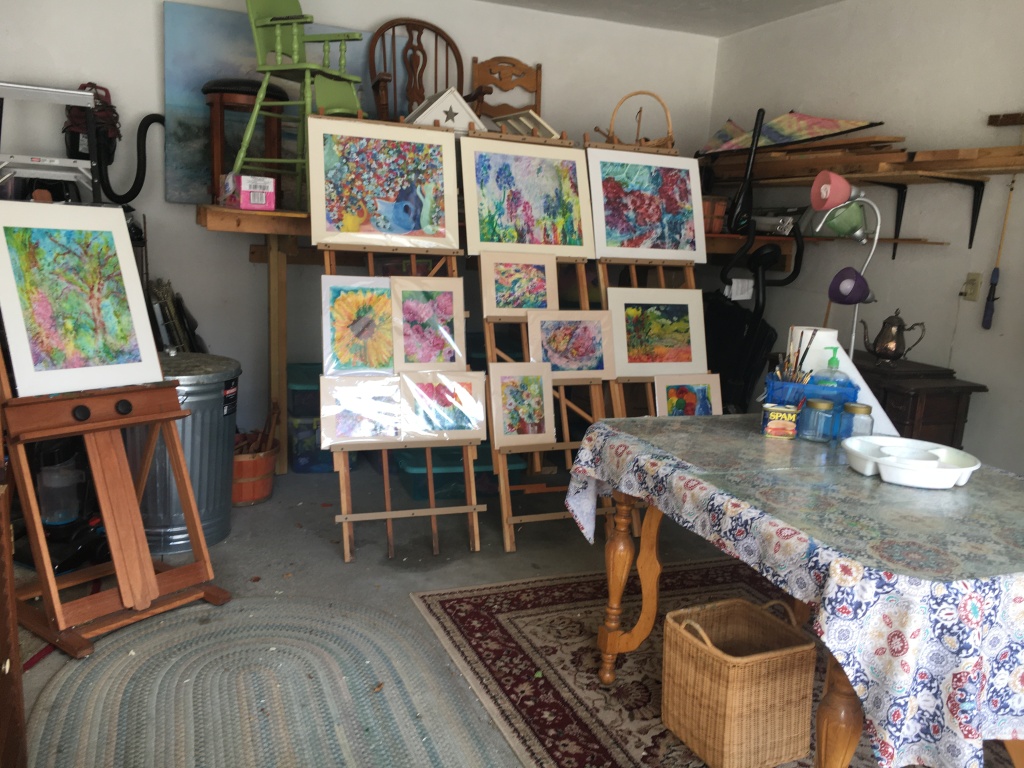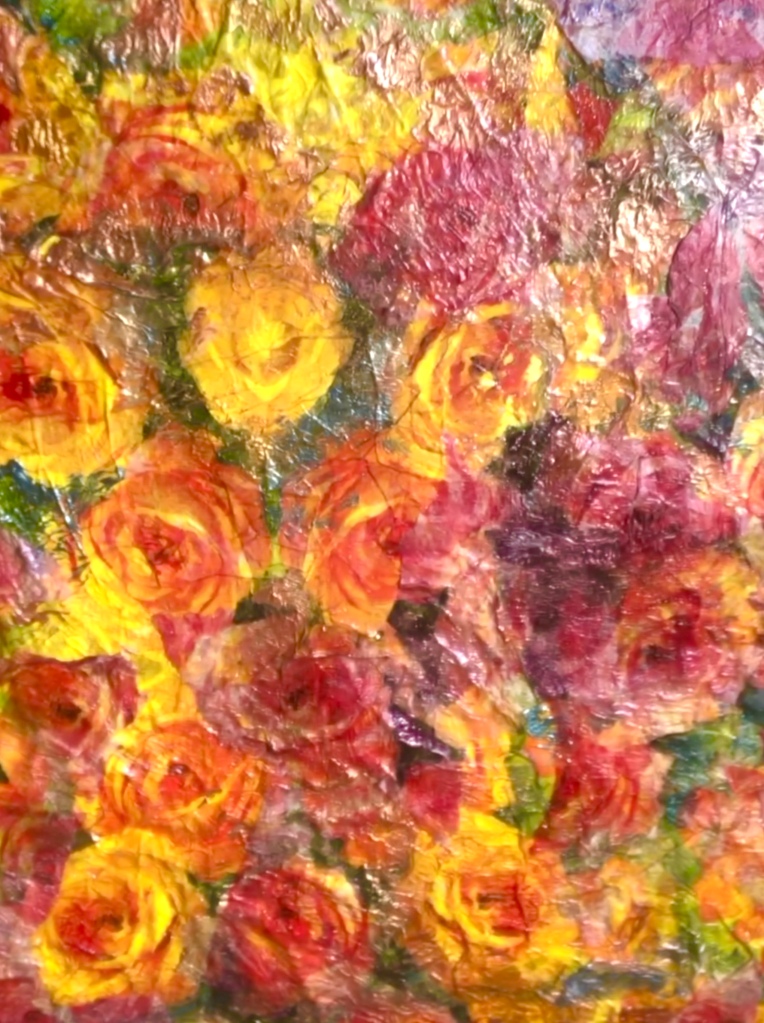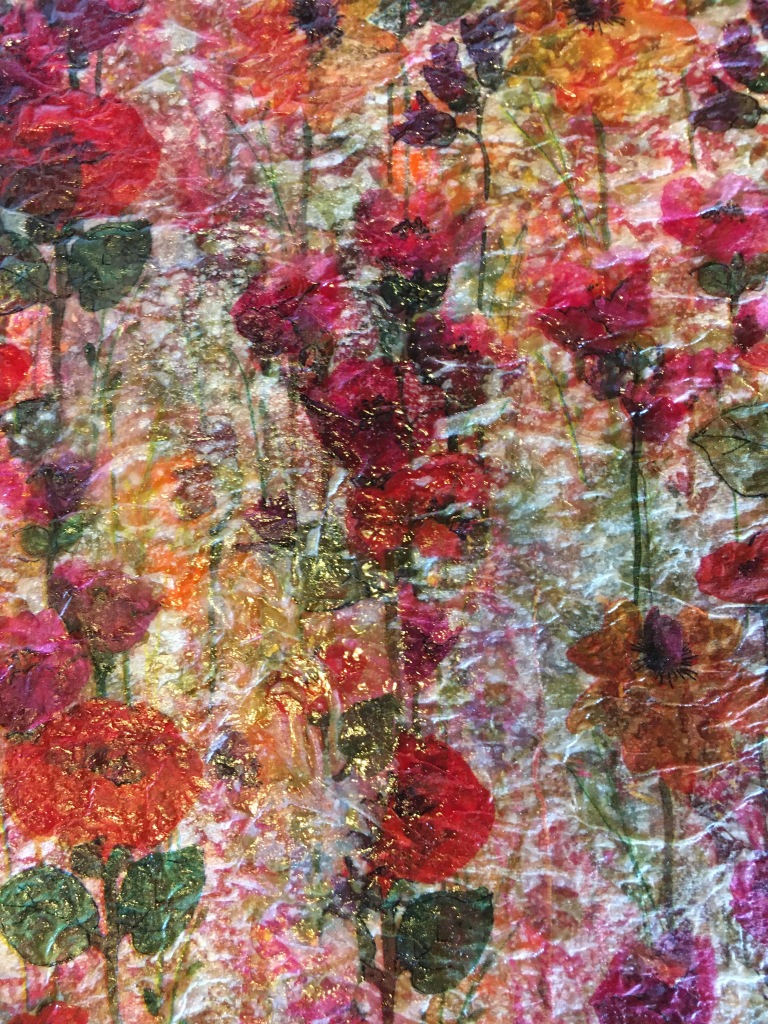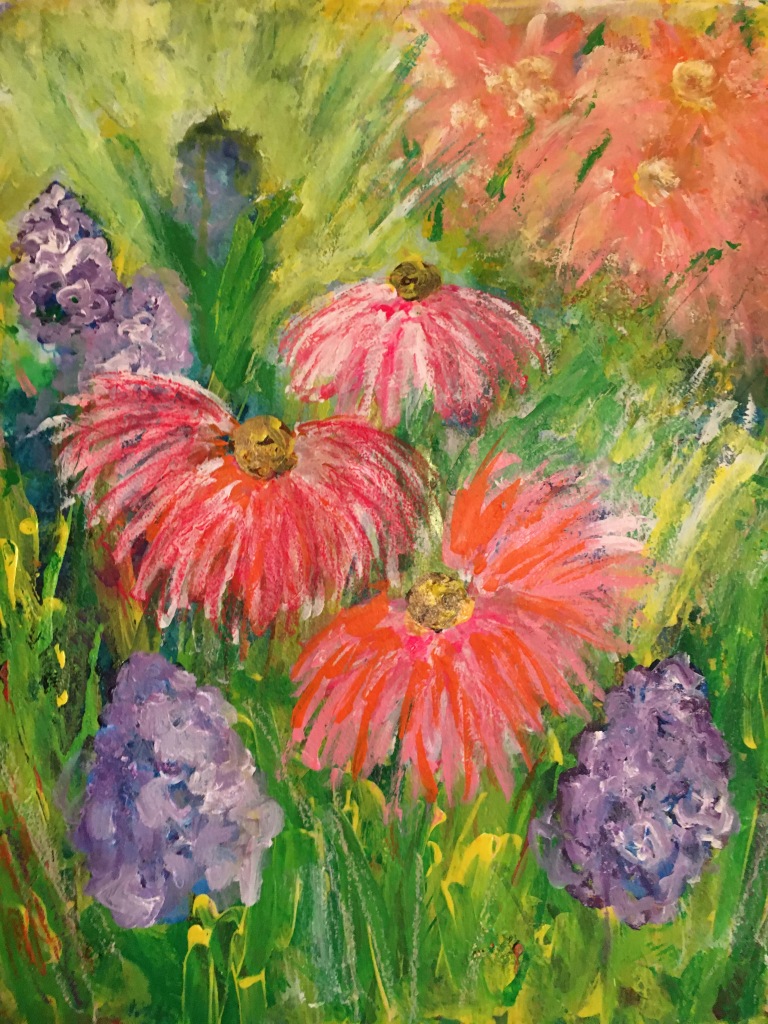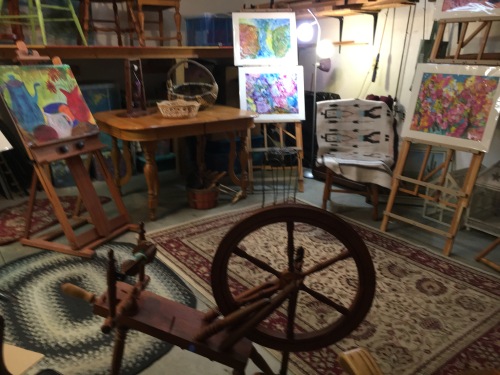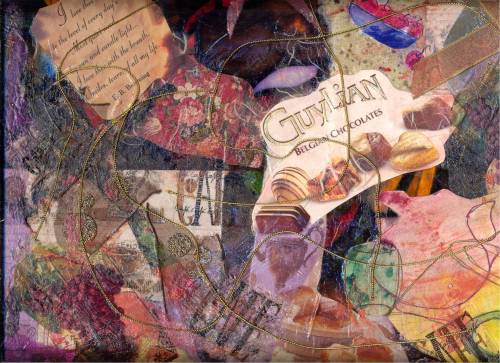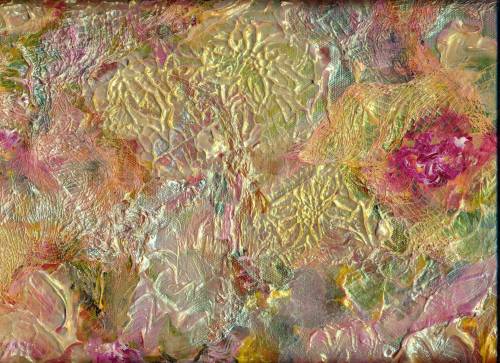
When we lived up north a decade ago, I was part of a local writers’ group. One of the members was an artist, and he had paintings on display in an area hospital. At the time I thought that was the ultimate. How wonderful for this man, how amazing! I was totally absorbed in writing and self-publishing my book of essays and poems, A TIME UNDER HEAVEN. It never entered my head that in just a few months I would pick up a paint brush, and consequently begin an entirely new life adventure.
I’d always enjoyed visual art and thought I would love to paint, but I kept telling myself I didn’t have any talent. Upon mentioning this to my friend Dee, she said “Why don’t you just do it?”. Something snapped that day, and I decided who cares about “talent”? I’m just going to have fun!
When we moved to Southern Wisconsin, I joined PAAC—the Pewaukee Area Arts Council, a group which promotes many disciplines including photography, creative writing, and music. I had thought my thrust would be what it always has been, writing and especially poetry. But one meeting called for participants to bring paintings for Show and Tell. A couple of artist members honed in on my watercolors and urged me forward. To this day, I’m grateful for that encouragement*—and to my friend, Dee, who gave me an initial shove!
Currently, along with other PAAC visual artists, I have paintings on exhibition in four locales: a chiropractic clinic, a bank, a family restaurant, and an area hospice. We change our work every three months, to accommodate the new season. This miracle (I will always consider it that!) benefits me in two ways:
1) The gallery opportunities keep me painting purposefully nearly every day, a work which I enjoy immensely and find infinitely refreshing. My desire is to hang something new every single time, in every place, rather than rotate a painting from one site to another—something I could do if necessary but would rather not.
2) The paintings are growing larger! Whereas my max was previously 16″ x 20″ (outside mat size), I’m now venturing into 20″ x 24″. One of the gallery sites contains a long, high wall. The 11″ x 14″ renderings which I happily hang in our home might get lost in that exhibition. Larger pieces are appropriate for the other galleries as well. And BIG is FUN!
Were paintings to exceed 20″ x 24″, I could work at our son Eric’s office in nearby Waukesha. There I have a door on filing cabinets, all to myself. So far I’ve used that resource for messy acrylics, collages, and water soluble oils, which I do very sparingly in the limited space at home in our carpeted bedroom. Eric has hung a couple of the collages on his theretofore bare walls, to my great satisfaction. (The approval of one’s family members is best of all!)
The above watercolor and gouache, “Sunspeak”, is “hot off the palette”, and framed in a 20″ x 24″ ready-made dark blue frame. Beautiful ready-made frames are available at the BEN FRANKLIN store a few miles from our door. Colorful frames have consistently dominated our walls at home, but suddenly I began to crave the mellow warmth of wood—maybe because we’ve had winter/winter/winter around here since early November.
Now my husband and I have begun to explore the St. Vincent de Paul Thrift Store (actually there are two of them close by) where we find lovely wooden frames for the proverbial song. A measuring tape has taken up permanent residence in my handbag, and we search and measure at least once a week. Joe removes the backing—paper or thin board, staples, whatever, and secures the hanging wires on the frames. I line each frame up in Joe’s work area—either vertically or horizontally so he knows which way to attach the wire.
Here’s a sample of a recent painting presented in a St. Vinnee’s frame:

My art is a series of baby steps, I know. There are real artists out there with real training and real ability! But every little baby step is a MIRACLE!
Margaret L. Been, February 2015
*NOTE: I can’t say enough about the value of encouragement. I’m continually amazed by the generosity of artists I’ve met—people whose work far exceeds my wildest dream. Quite honestly, I didn’t always experience encouragement from fellow writers; my writing approbation came from contests, sales to magazines, and from people who enjoyed reading what I wrote.
I’ve often pondered why that should be so. Perhaps writers tend to be more introspective than a lot of people and thereby preoccupied with whatever they are thinking. I admit I’ve been that way at times—especially when processing the deeper things in life. But to encourage another person is such a joy! I’ve basked in that joy through teaching writing classes over the years.
Like writers, visual artists are tuned in to the world around them—to seeing and experiencing. But then writers must retreat into the process of distilling their gleanings into words. Words are miracles too, But writing is a LONELY craft, at best—and it does demand periods of detachment. We may be satisfied with our words, while wondering if anyone else will ever read them. And maybe no one ever will—thus the conduit to sharing is severed.
Conversely, artists translate their impressions into explosions of shapes and color. Regardless of level of expertise or lack of it, these visuals provide gratification. We are tremendously fulfilled when we are pleased with our colors and shapes. We can SEE our work, and others can see it as well. Varieties of art are endless; each one of us is unique. This very fact, plus the perk of seeing with our eyes, may create a glorious freedom to encourage others, and be encouraged!
Now isn’t the introspective writer coming out in this discourse?! Gnawing, ruminating, analyzing, processing thoughts into intangible words?! No wonder we writers can become ingrown toenails, even oblivious. Time to go back to the palette and let the colors fly. 🙂
Read Full Post »
